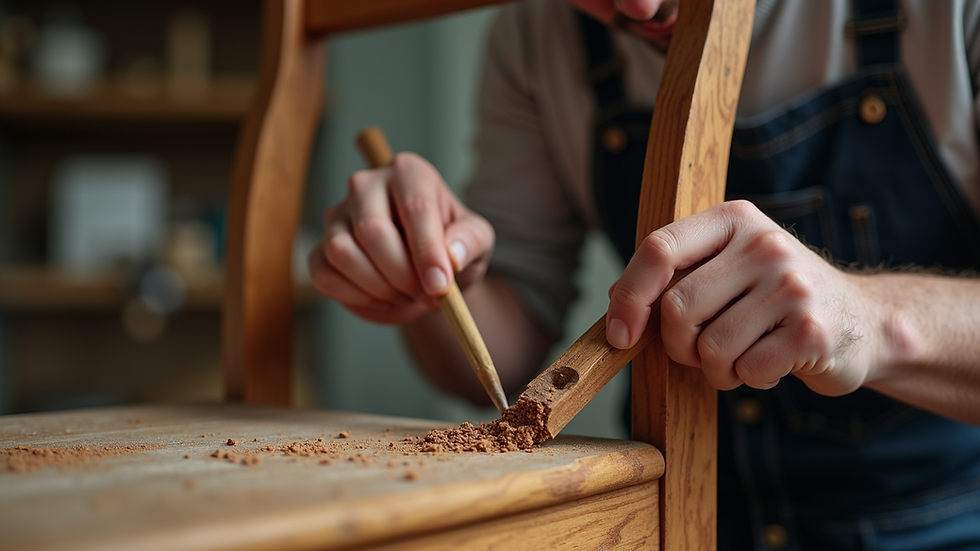Preserving Heritage with Historic Property Restoration
- info78870379
- Sep 22
- 3 min read
Historic buildings are more than just structures; they are tangible links to our past. Restoring these properties allows us to preserve cultural heritage, architectural beauty, and community identity. This blog post explores the importance of restoration of historic properties, the process involved, and practical tips for successful projects.
The Importance of Restoration of Historic Properties
Restoring historic properties is essential for several reasons:
Cultural Preservation: These buildings tell stories of past generations, reflecting the social, economic, and artistic values of their time.
Architectural Significance: Many historic buildings showcase unique craftsmanship and design that modern construction rarely replicates.
Environmental Benefits: Restoration often uses fewer resources than new construction, reducing waste and preserving materials.
Economic Value: Restored historic properties can increase tourism, boost local economies, and raise property values.
For example, a 19th-century Victorian home restored with attention to original details can become a community landmark, attracting visitors and fostering pride among residents.

Key Steps in the Restoration of Historic Properties
Restoring a historic property requires careful planning and execution. Here are the main steps involved:
Research and Documentation
Understand the building’s history, original design, and previous alterations. This may involve studying old photographs, blueprints, and historical records.
Assessment and Inspection
Conduct a thorough inspection to identify structural issues, material degradation, and areas needing repair.
Planning and Permits
Develop a restoration plan that respects the building’s historic character. Obtain necessary permits and approvals from local heritage or preservation authorities.
Material Selection
Use materials that match or closely resemble the original ones. This maintains authenticity and ensures compatibility.
Skilled Craftsmanship
Employ professionals experienced in historic restoration techniques, such as masonry, carpentry, and plasterwork.
Modern Upgrades with Sensitivity
Integrate modern systems like HVAC, electrical, and plumbing discreetly to meet current standards without compromising historic integrity.
Ongoing Maintenance
After restoration, regular maintenance is crucial to preserve the building’s condition and prevent future deterioration.
Following these steps helps ensure a successful restoration that honors the building’s past while making it functional for today.

What is Historic Restoration?
Historic restoration is the process of returning a building or structure to its original condition or appearance. It involves repairing or replacing damaged elements while preserving as much of the original material as possible. The goal is to maintain the building’s historical and architectural significance.
There are different approaches to historic restoration:
Preservation: Focuses on maintaining and repairing existing historic materials without significant alteration.
Rehabilitation: Allows for updates and changes to make the building usable while retaining its historic character.
Reconstruction: Involves rebuilding a non-surviving part of a property based on historical evidence.
For example, restoring a colonial-era church might involve preserving original stone walls, rehabilitating the interior for modern use, and reconstructing a missing steeple based on old photographs.

Practical Tips for Successful Historic Property Restoration
Restoring historic properties can be complex, but these tips can help:
Engage Experts Early
Consult architects, historians, and contractors specializing in historic restoration from the start.
Prioritize Structural Integrity
Address foundational and structural issues before cosmetic improvements.
Document Everything
Keep detailed records of all work, materials used, and changes made for future reference.
Respect Original Features
Preserve unique architectural details like moldings, windows, and flooring whenever possible.
Use Compatible Materials
Avoid modern materials that may cause damage or look out of place.
Plan for Energy Efficiency
Incorporate insulation and energy-saving systems subtly to improve comfort without altering appearance.
Budget Wisely
Restoration can be costly; allocate funds for unexpected repairs and quality craftsmanship.
Seek Grants and Incentives
Many governments and organizations offer financial support for historic preservation projects.
By following these recommendations, property owners can achieve a restoration that is both authentic and sustainable.
The Role of Historic Property Restoration in Community Revitalization
Historic property restoration plays a vital role in revitalizing neighborhoods and communities. Restored buildings often become focal points for cultural activities, tourism, and local pride. They can inspire investment in surrounding areas, leading to improved infrastructure and economic growth.
For instance, a restored historic downtown district can attract new businesses, restaurants, and galleries, creating a vibrant social hub. Additionally, preserving heritage buildings fosters a sense of identity and continuity, connecting residents to their shared history.
Investing in historic property restoration is not just about saving old buildings; it’s about building stronger, more resilient communities for the future.
Preserving historic properties through careful restoration is a rewarding endeavor that benefits individuals and society alike. By understanding the process, respecting original craftsmanship, and planning thoughtfully, we can ensure these treasures endure for generations to come.



Comments